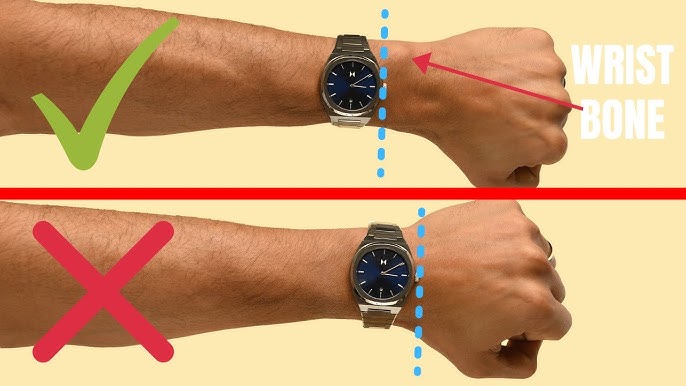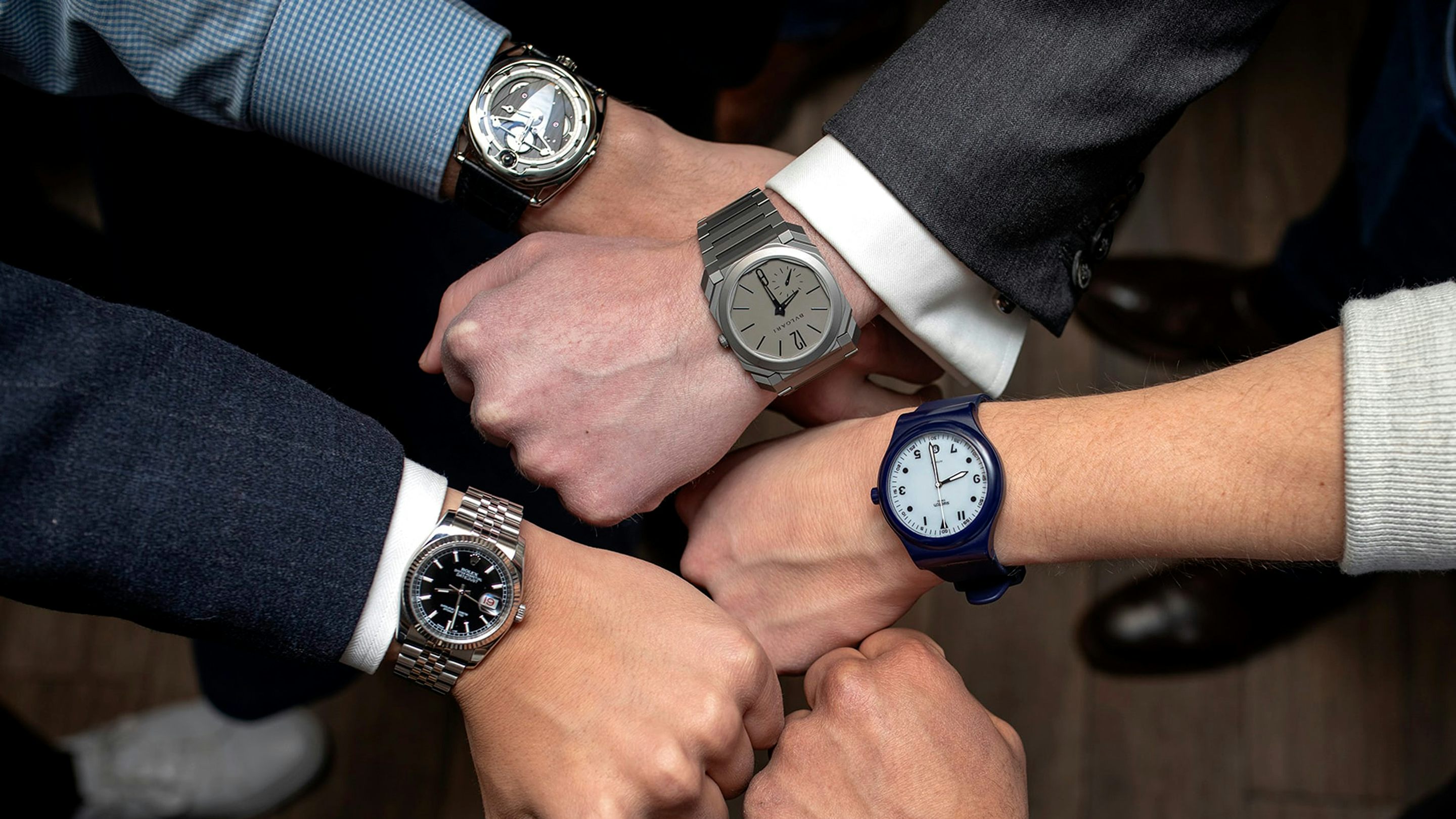Wristwatches are not only functional items but also significant fashion accessories and status symbols that can say a lot about a person’s style and attention to detail.
Understanding wrist watch etiquette is essential for both men and women, as it reflects one’s personality and social awareness. Here are the fundamental rules of wrist watch etiquette that should guide you in making the right impression in various social and professional settings.
Key Takeaways
- Wristwatch Placement: Watches are usually worn on the non-dominant wrist to avoid interference with tasks and to prevent damage.
- Matching Watch with Occasion: Men should select watches appropriate to the formality of the event, while women can choose versatile styles that may also serve as jewelry.
- Proportions and Coordination: The watch should fit the wrist size and be coordinated with other accessories for both genders.
- Discretion in Social Settings: Avoid frequent time-checking and discussing your watch in a way that may seem boastful.
- Cultural Sensitivity: Be mindful of cultural meanings and implications when wearing or gifting watches.
- Comfort and Convenience: Wear the watch on the wrist that feels most comfortable and allows for ease of use, whether it’s the left or right hand.
- Style and Protection: Women may wear watches on the right hand for fashion, balance with other accessories, or to protect the watch if they are left-handed.
Choosing the Right Watch
For Males
- Match Your Watch to the Occasion: Men should choose a watch that complements the formality of the event. A simple dress watch with a leather strap is perfect for business or formal events, while sports watches are better suited for casual or outdoor activities.
- Size Matters: The watch should be proportionate to your wrist size. Avoid oversized watches if you have a smaller wrist, as they can appear clunky and draw unnecessary attention.
- Metal Coordination: Coordinate the metal of your watch with other accessories such as cufflinks, belt buckles, and shoe buckles. Consistency in metal tones reflects a well-put-together look.
For Females
- Versatility and Style: Women have more leeway in choosing watches that are both functional and jewelry pieces. Depending on the occasion, a woman can wear a delicate watch with a metal band for formal events or a larger, more casual watch for everyday wear.
- Consider the Proportions: Like men, women should consider the size of the watch in relation to their wrist. However, some women prefer wearing watches with larger faces as a fashion statement, which is acceptable in less formal settings.
- Complement Your Outfit: The watch should complement the overall outfit and can be matched with other jewelry. It should not overpower the ensemble but rather act as a sophisticated accessory.

Wearing Your Watch Correctly
- Positioning: Traditionally, watches are worn on the non-dominant wrist to prevent them from getting in the way of tasks and to minimize damage.
- Fit: Both men and women should ensure their watch fits properly. It should be snug enough so that it doesn’t slide around the wrist but not so tight as to leave an imprint or be uncomfortable.
Watch Etiquette in Social Situations
- Checking the Time: Constantly looking at your watch can be perceived as rude or a sign of boredom. Be discreet when checking the time in social or professional settings.
- Talking About Your Watch: While it’s fine to discuss your watch if complimented or asked about it, avoid bragging about the cost or brand of your watch as it can come off as ostentatious.

Cultural Considerations
- International Etiquette: Be aware that in some cultures, wearing a watch may have specific connotations. For example, in certain countries, a flashy watch might be seen as a display of wealth and could attract unwanted attention.
- Gifting Watches: In some cultures, giving a watch as a gift can be considered bad luck or an implication of counting down the time. Always consider cultural beliefs when gifting watches.
By adhering to these etiquette guidelines, both males and females can ensure they are wearing their wristwatches appropriately, enhancing their personal style and respecting the norms of various occasions.
Remember that a watch can be a statement piece, but it should also be chosen and worn with consideration to context and decorum.

Why Do Ladies Wear a Watch on the Right Hand?
Traditionally, watches are worn on the left wrist, but there are instances where women prefer to wear their watch on the right hand. Here are some reasons and cultural significance behind this practice:
- Dominant Hand: Many right-handed women wear watches on their non-dominant hand, which is the left. However, left-handed ladies often choose to wear their watch on the right hand to prevent it from getting in the way of daily tasks.
- Fashion Statement: Fashion trends sometimes suggest wearing watches on the right hand as a style statement or to complement bracelets and bangles on the left wrist.
- Cultural Significance: In some cultures, wearing a watch on the right hand can have specific meanings or be seen as a sign of good luck or prosperity.
Benefits of Wearing a Watch on the Right Hand
Wearing a watch on the right hand can have certain advantages:
- Ease of Use: For left-handed individuals, having a watch on the right wrist makes it easier to adjust the settings without taking the watch off.
- Balance: Wearing a watch on the right can balance out bracelets or other accessories worn on the left hand.
- Protection: The right wrist may be less used or less exposed to potential damage for left-handed wearers, protecting the watch from scratches and impacts.

Should You Wear a Watch on the Left or Right Hand?
When deciding which wrist to wear a watch on, consider the following:
- Comfort: Choose the wrist that feels most comfortable and natural for wearing a watch.
- Convenience: Select the wrist that allows for easy reading of the time and handling of the watch’s functions.
- Aesthetics: Consider how the watch complements other accessories and attire when choosing a wrist.
Pros of Wearing on the Left Hand:
- Traditional and commonly accepted practice.
- Convenient for right-handed individuals.
Cons of Wearing on the Left Hand:
- Might be uncomfortable for left-handed wearers.
- Can get in the way of daily tasks for left-handed individuals.
Pros of Wearing on the Right Hand:
- Better for left-handed wearers.
- Can be a unique style statement.
Cons of Wearing on the Right Hand:
- Might be awkward for right-handed wearers.
- Less traditional and may draw questioning.

The Psychology of Wearing a Watch on the Right or Left Hand
The placement of a watch can have psychological implications:
- Personality Expression: Wearing a watch on the non-traditional hand might reflect a rebellious or unique personality.
- Symbolism: For some, the choice of hand may symbolize different attributes, such as the right hand representing power or the left hand representing intellect.
5 Rules That Every Watch Wearer Should Follow
- Match the Watch to the Occasion: A dress watch for formal events, a sports watch for casual or athletic settings.
- Watch Size: The watch should be proportionate to your wrist — not too large or too small.
- Coordination: The watch should complement your outfit and other accessories.
- Maintenance: Regularly maintain and service your watch to keep it in top condition.
- Respect: Be mindful of where and when you check your watch, as it can be rude in certain social situations.
Frequently Asked Questions
Which hand should a woman wear a watch on?
A woman can wear a watch on either the left or right hand based on personal preference, comfort, dominant hand, or cultural significance.
What is the rule for wrist watches for men?
Men should typically wear a wristwatch on the non-dominant hand, which is often the left, to prevent interference with tasks and for ease of use.
Which wrist is left or right for a watch for men?
The left wrist is traditionally where men wear their watches, but the right wrist may be more appropriate for left-handed individuals.
What is the right way of wearing a watch?
- Choose a watch that fits your wrist snugly but comfortably.
- Position the watch so that it sits just above the wrist bone.
- Ensure the watch face is easily readable at a glance.
- Adjust the time and date before wearing it.
- Wear the watch on the wrist that suits your comfort and needs.
Who should wear a watch on the right hand?
Individuals who are left-handed or those who wish to make a fashion statement may choose to wear a watch on the right hand.
Which people wear a watch on the right hand?
Left-handed individuals, those who follow certain cultural practices, or people in specific professions that require the left hand to be free (e.g., artists, architects) often wear a watch on the right hand.
Through understanding and adopting proper wristwatch etiquette, both males and females can enhance their personal style and ensure that their timepieces are worn in a manner that is both practical and respectful of social norms.
RELATED ARTICLES
- Professional Watch Cleaning: 5 Smart Ideas
- 10 SIMPLE STEPS TO PROPERLY CLEAN LEATHER WATCH STRAPS
- PROFESSIONAL WATCH CLEANING: 5 SMART IDEAS
- How to Match Your Watch with Your Outfit:
- THE INTERESTING HISTORY OF ROLEX WATCHES
- HOW TO FIX SCRATCHED GOLD PLATING ON A WATCH
- HOW TO TELL IF A WATCH IS MAGNETIZED
- 15 Advantages of the Smartwatch - May 31, 2024
- What Are Smartwatches? : All you need to Know - May 29, 2024
- Antique Pocket Watches: A Comprehensive Guide - May 25, 2024

